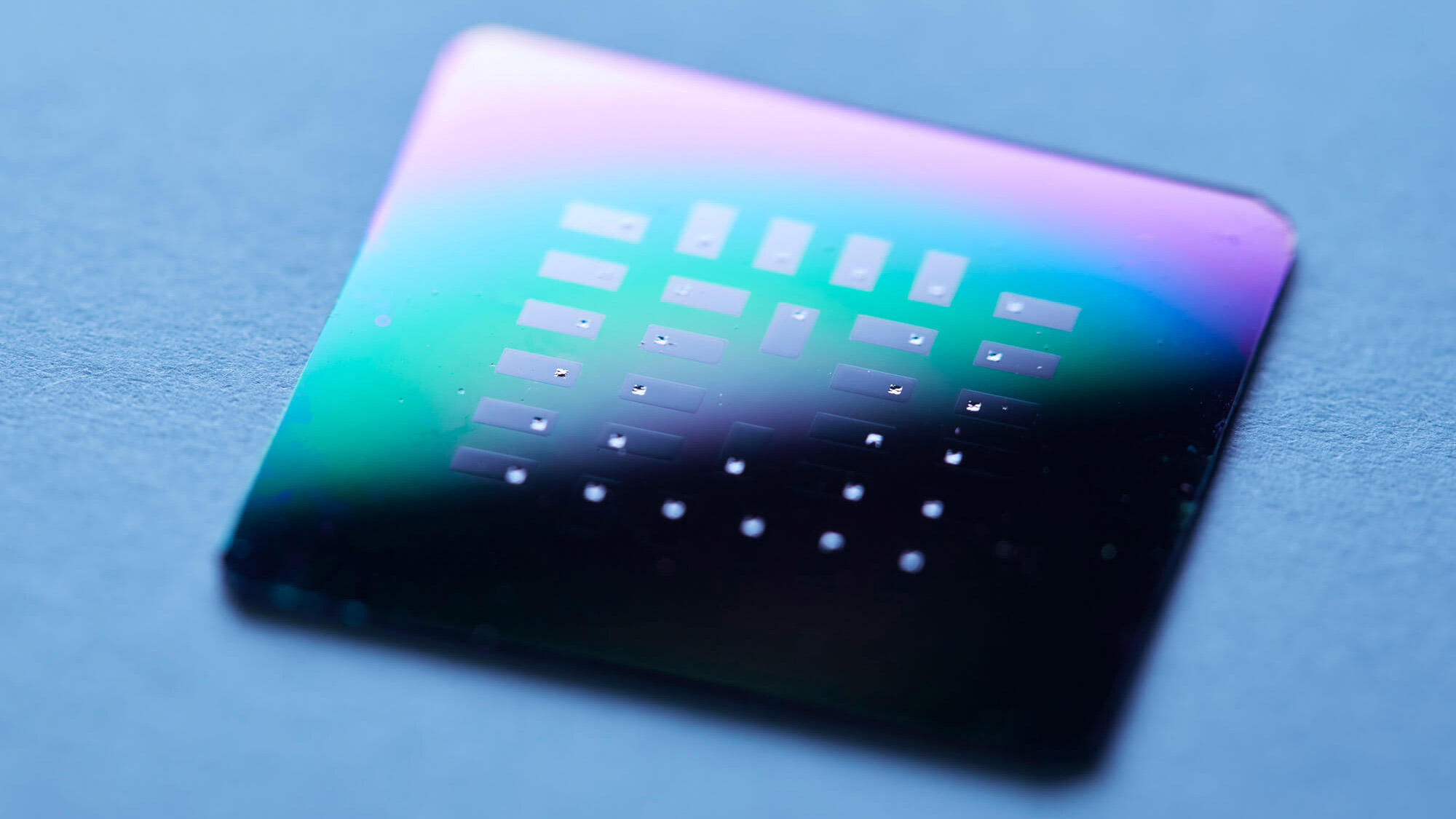Sugar rush
An ultrathin fuel cell uses the body’s own glucose to generate electricity that could power implantable devices.

A tiny fuel cell developed by engineers at MIT and the Technical University of Munich (TUM) converts glucose, the fuel that powers every cell in our bodies, directly into electricity that could power implanted medical devices such as pacemakers.
The inspiration for the invention came in 2016, when Jennifer L.M. Rupp, an associate professor at TUM and a visiting professor at MIT, took a routine glucose test toward the end of her pregnancy. “In the doctor’s office, I was a very bored electrochemist, thinking what you could do with sugar and electrochemistry,” Rupp recalls. “Then I realized it would be good to have a glucose-powered solid-state device.”
She and Philipp Simons, PhD ’21, MBA ’22, who developed the design for his thesis in the Department of Materials Science and Engineering, sketched out the idea on a napkin: a three-layer device consisting of an electrolyte sandwiched between an anode and a cathode. The anode reacts with the glucose in bodily fluids, releasing a pair of protons and a pair of electrons that are separated in the electrolyte. They flow to the cathode, where the protons combine with oxygen to form water that flows away with the body’s fluids, leaving the electrons to go through an external circuit.
The idea of a glucose fuel cell is not new, but the researchers improved on previous designs by replacing the conventional polymer electrolyte with one made from a biocompatible ceramic, which retains its electrochemical properties at much higher temperatures and smaller scales than polymers do. The new device measures just 400 nanometers thick, and it can withstand temperatures up to 600 °C, so it can be sterilized for use in medical implants. It generates about 43 microwatts of electricity per square centimeter, achieving the highest power density of any abiotic glucose fuel cell to date under ambient conditions.
The team sandwiched the electrolyte with an anode and cathode made of platinum, a stable material that readily reacts with glucose. They fabricated 150 individual glucose fuel cells on silicon chips cut from conventional silicon wafers, showing that the devices can be paired with a common semiconductor material. “Excitingly, we are able to draw power and current that’s sufficient to power implantable devices,” Simons says.
“It is the first time that proton conduction in electroceramic materials can be used for glucose-to-power conversion, defining a new type of electrochemistry,” Rupp says. “It extends the material use cases.” The researchers envision the new design being made into ultrathin films or coatings and wrapped around implants to passively power electronics, using the body’s abundant glucose supply.
Keep Reading
Most Popular
Large language models can do jaw-dropping things. But nobody knows exactly why.
And that's a problem. Figuring it out is one of the biggest scientific puzzles of our time and a crucial step towards controlling more powerful future models.
The problem with plug-in hybrids? Their drivers.
Plug-in hybrids are often sold as a transition to EVs, but new data from Europe shows we’re still underestimating the emissions they produce.
Google DeepMind’s new generative model makes Super Mario–like games from scratch
Genie learns how to control games by watching hours and hours of video. It could help train next-gen robots too.
How scientists traced a mysterious covid case back to six toilets
When wastewater surveillance turns into a hunt for a single infected individual, the ethics get tricky.
Stay connected
Get the latest updates from
MIT Technology Review
Discover special offers, top stories, upcoming events, and more.